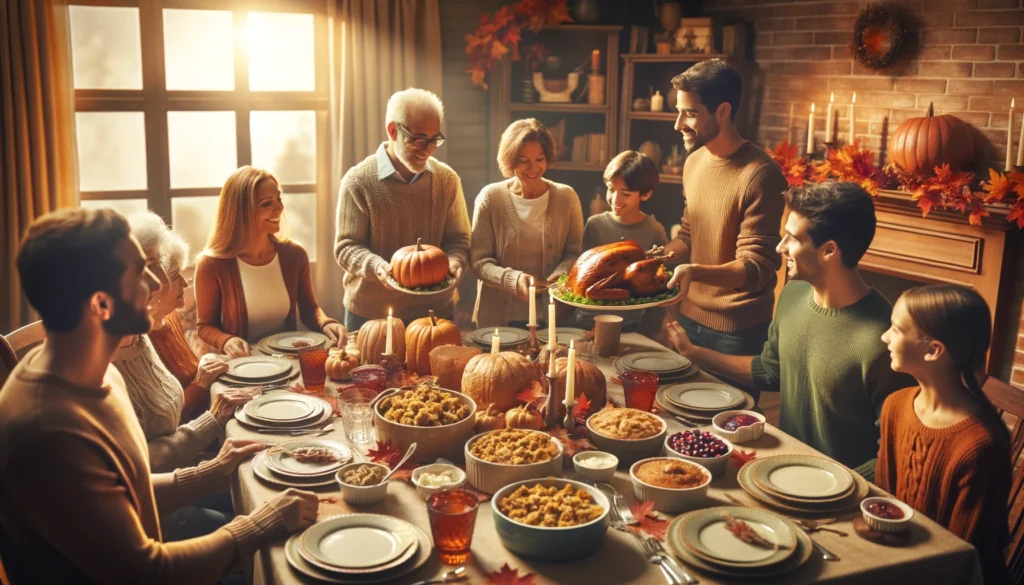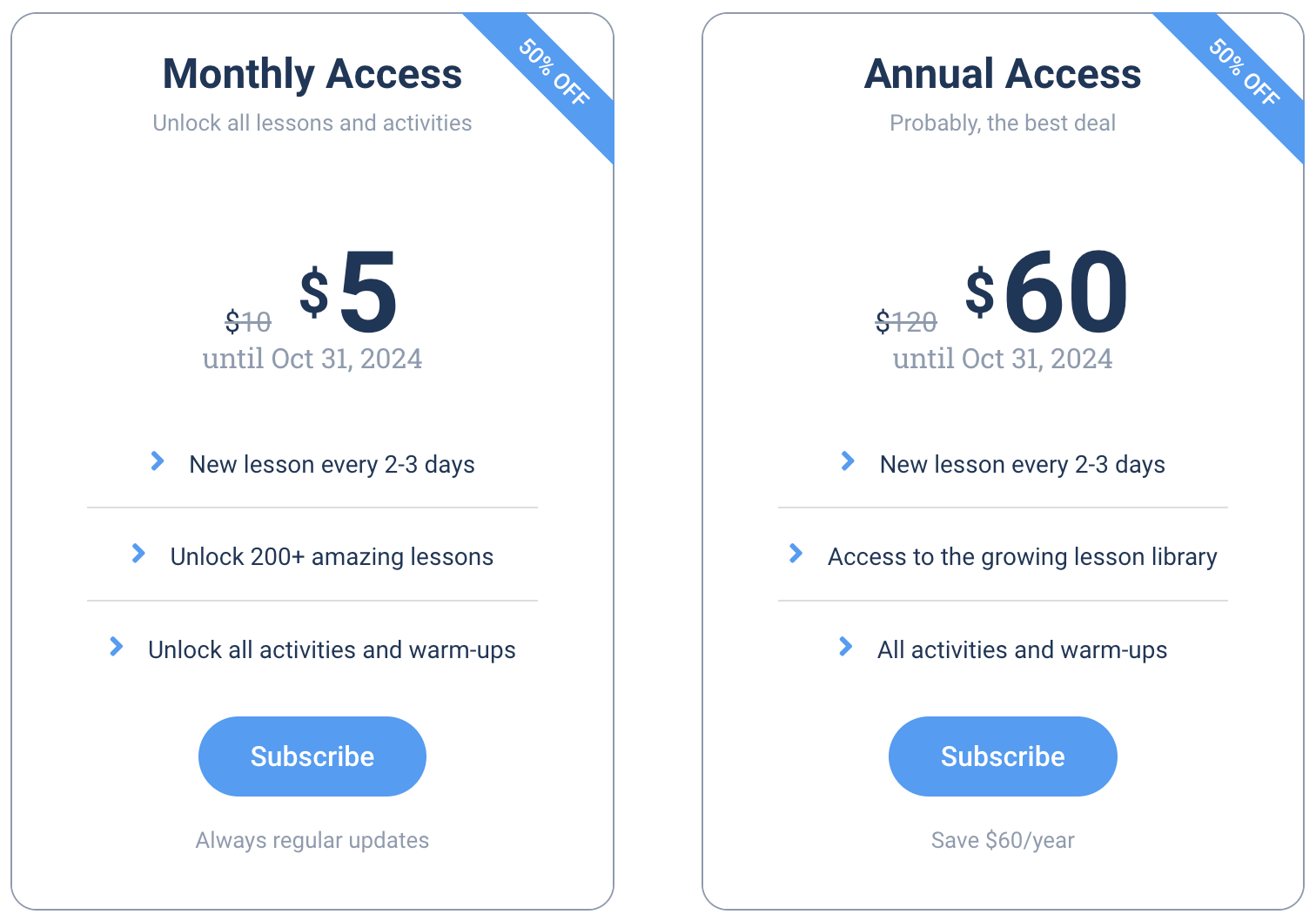
Thanksgiving Day, celebrated on the fourth Thursday of November in the United States, is a time for Americans to give thanks for the fall harvest and other blessings of the past year. Traditionally, this holiday is marked by a feast that includes turkey, stuffing, cranberry sauce, and pumpkin pie, reflecting the meal shared by the Pilgrims and the Wampanoag tribe in 1621. Beyond the feast, Thanksgiving is a day for spending time with family and friends, reflecting on gratitude, and participating in various traditions such as watching football games, parades, and volunteering to help those in need.
Table of Contents
A2 Level Questions:
- What is Thanksgiving Day?
- When is Thanksgiving celebrated?
- Why do people eat turkey on Thanksgiving?
- What are some other foods eaten on Thanksgiving?
- Do children go to school on Thanksgiving?
- What is the history of Thanksgiving?
- Who were the Pilgrims?
- What is a parade, and why are they part of Thanksgiving?
- What do people do on Thanksgiving Day?
- How do you say thank you on Thanksgiving?
- Why is family important on Thanksgiving?
- What is a football game, and why is it associated with Thanksgiving?
- Can you name a Thanksgiving Day parade?
- Why is giving thanks important?
- What is a tradition?
- How do Americans celebrate Thanksgiving?
- What is the story of the Pilgrims and the Wampanoag tribe?
- How do people travel on Thanksgiving?
- Why do some people volunteer on Thanksgiving?
- What is your favorite part of Thanksgiving?
B1 Level Questions:
- Discuss the significance of Thanksgiving in American culture.
- How has the celebration of Thanksgiving changed over time?
- Why is Thanksgiving Day considered a time for gratitude?
- What are some ways people give back to the community on Thanksgiving?
- How do different families celebrate Thanksgiving differently?
- What is the role of the Thanksgiving Day parade in celebrations?
- Why do some people not eat turkey on Thanksgiving?
- How do Thanksgiving traditions vary across the United States?
- What are some challenges people might face during Thanksgiving?
- How do schools teach about Thanksgiving?
- Discuss the importance of the harvest season to Thanksgiving.
- How does the Thanksgiving meal bring families together?
- Why are football games a Thanksgiving tradition?
- What are some movies or TV shows about Thanksgiving?
- How do Americans living abroad celebrate Thanksgiving?
- What are some alternative ways to celebrate Thanksgiving?
- Discuss the historical relationship between the Pilgrims and the Wampanoag tribe.
- How do you think Thanksgiving promotes gratitude?
- What are some controversies surrounding Thanksgiving?
- How can Thanksgiving be made more inclusive?
B2 Level Questions:
- Analyze the historical origins of Thanksgiving and its evolution into a national holiday.
- Evaluate the impact of Thanksgiving on American identity and culture.
- Discuss the commercialization of Thanksgiving, particularly Black Friday.
- How do indigenous perspectives on Thanksgiving differ from mainstream narratives?
- Compare Thanksgiving traditions in the United States with harvest festivals in other cultures.
- Explore the role of food in Thanksgiving celebrations and its cultural significance.
- Discuss the ethics of celebrating Thanksgiving from a historical and cultural perspective.
- How has globalization affected the way Thanksgiving is celebrated?
- Analyze the representation of Thanksgiving in media and popular culture.
- Discuss the social and familial dynamics of Thanksgiving gatherings.
- Evaluate the environmental impact of Thanksgiving celebrations.
- How do volunteer and charity efforts reflect the spirit of Thanksgiving?
- Discuss the role of Thanksgiving in fostering community and national unity.
- Analyze the challenges faced by people who are alone or away from family on Thanksgiving.
- Explore the intersection of Thanksgiving and political discourse in the United States.
- Evaluate the role of Thanksgiving in the American culinary tradition.
- Discuss the impact of Thanksgiving on U.S. consumer behavior and the economy.
- How do Thanksgiving celebrations address themes of belonging and cultural identity?
- Analyze the role of Thanksgiving in American sports culture.
- Discuss the potential for Thanksgiving to serve as a catalyst for reconciliation and healing.
C1 Level Questions:
- Critique the narrative of Thanksgiving as a symbol of peace and unity between Pilgrims and Native Americans.
- Analyze the role of Thanksgiving in the construction of American historical memory and identity.
- Discuss the implications of Thanksgiving for contemporary indigenous rights movements.
- Evaluate the significance of Thanksgiving in the context of American gastronomy and food culture.
- How does Thanksgiving reflect broader themes of migration and settlement in American history?
- Examine the influence of Thanksgiving on American consumerism and the holiday season.
- Discuss the cultural appropriation and reinterpretation of Thanksgiving in a global context.
- Analyze the psychological and social effects of familial and societal expectations on Thanksgiving.
- Evaluate the potential of Thanksgiving as a platform for addressing social and economic inequalities.
- Discuss the intersection of tradition, innovation, and resistance in Thanksgiving celebrations.
C2 Level Questions:
- Critically assess the historical accuracy and cultural implications of the Thanksgiving myth.
- Explore the dynamics of power and representation in the narratives surrounding Thanksgiving.
- Analyze the role of Thanksgiving in the American mythos and its impact on national cohesion.
- Evaluate the ethical considerations of celebrating Thanksgiving in light of historical injustices.
- Discuss the transformation of Thanksgiving in the digital age and its implications for community and identity.
- Examine the commodification of Thanksgiving and its impact on cultural and economic practices.
- Analyze the potential for Thanksgiving to foster critical dialogue about American history and society.
- Explore the concept of gratitude in the context of Thanksgiving and its relevance to contemporary social issues.
- Critically evaluate the role of Thanksgiving in shaping perceptions of American exceptionalism.
- Discuss the future of Thanksgiving in an increasingly diverse and interconnected world.

